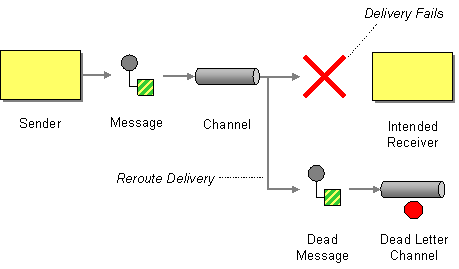...
Camel supports the Dead Letter Channel from the EIP patterns using the DeadLetterChannel processor which is an Error Handler.

| Tip |
|---|
| title | Difference between Dead Letter Channel and Default Error HandlerDifferences Between The DeadLetterChannel And The DefaultErrorHandler |
|---|
|
The DefaultErrorHandler does very little: it ends the Exchange immediately and propagates the thrown Exception back to the caller. The DeadLetterChannel lets you control behaviors including redelivery, whether to propagate the thrown Exception to the caller (the handled option), and where the (failed) Exchange should now be routed to. The DeadLetterChannel is also by default configured to not be verbose in the logs, so when a message is handled and moved to the dead letter endpoint, then there is nothing logged. If you want some level of logging you can use the various options on the redelivery policy / dead letter channel to configure this. For example if you want the message history then set logExhaustedMessageHistory=true (and logHandled=true for Camel 2.15.x or older). When the DeadLetterChannel moves a message to the dead letter endpoint, any new Exception thrown is by default handled by the dead letter channel as well. This ensures that the DeadLetterChannel will always succeed. From Camel 2.15: this behavior can be changed by setting the option deadLetterHandleNewException=false. Then if a new Exception is thrown, then the dead letter channel will fail and propagate back that new Exception (which is the behavior of the default error handler). When a new Exception occurs then the dead letter channel logs this at WARN level. This can be turned off by setting logNewException=false. |
...